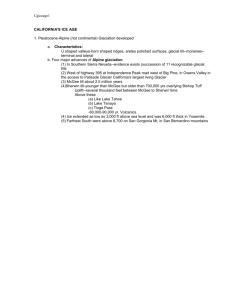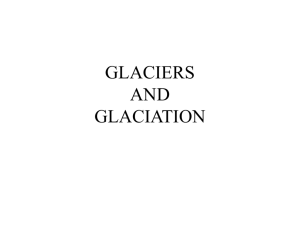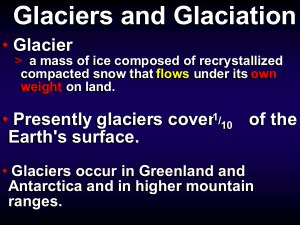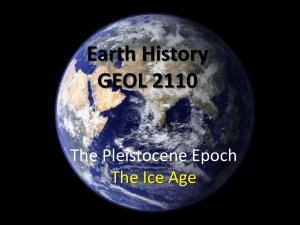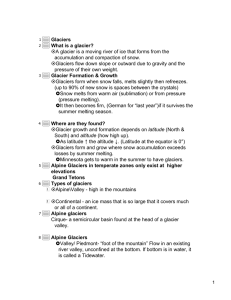Glaciation - The Naked Science Society
advertisement
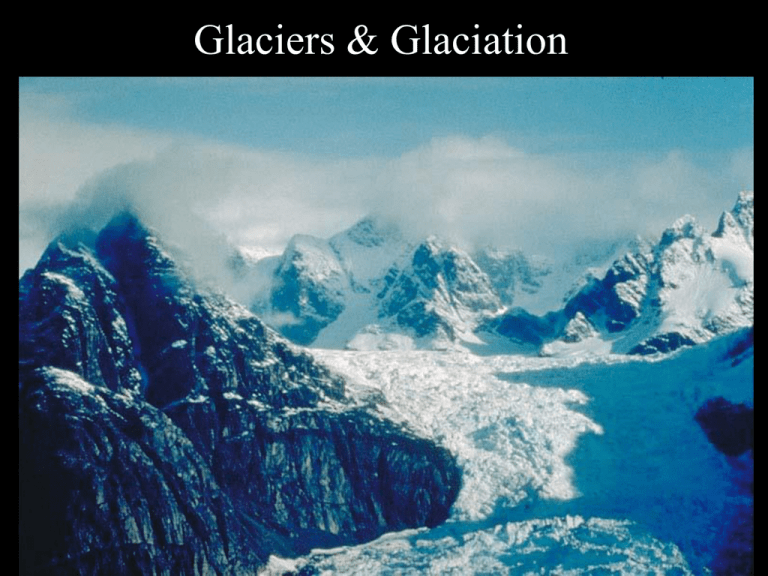
Glaciers & Glaciation Glaciers • Glacier: a large, long-lasting mass of ice, formed on land that moves under the influence of gravity and its own weight • Glaciers form by accumulation and compaction of snow – Packed snow becomes firm – Then refreezes to ice Glaciation Types • Alpine glaciation: found in mountainous regions • Continental glaciation: exists where a large part of a continent is covered by glacial ice Cover vast areas Two types of glaciers Alpine Glaciers Continental Glaciers Features of Alpine Glaciation Horn A steep-sided, pyramidshaped peak produced by headward erosion of several cirques. Arete A sharp, jagged, knife-edge ridge between two cirques or glaciated valleys. Cirques Glacial Valley Horn Arete Hanging Valley A glacial trough of a tributary glacier elevated above the main trough. a lake in a cirque Tarns Glacier Braided Stream A plain formed by a blanket-like deposition of glacial outwash. Outwash Plain U-shaped Valleys Glacial Sediments Glacial Till ___________________ Unsorted and unstratified sediments that collect directly from the melting of ice. Unstratified sheets of clayey silt that are transported beyond the margins of a glacier by wind and/or braided streams ______________________ Loess Moraines Moraines are large piles of rocks composed of Unsorted Till (glacial debris) Unsorted Till Lateral Moraines Medial Moraines Drumlins Ice Flow Kettles A round lake in a depression in glacial drift... formed by melting of an isolated block of ice. Kame A steep-sided mound of stratified drift... that formed in contact with glacial ice. Erratic A boulder that was carried far from its source by a glacier. Esker A long, narrow, sinuous ridge of stratified drift... deposited by meltwater streams flowing beneath the glacier.





